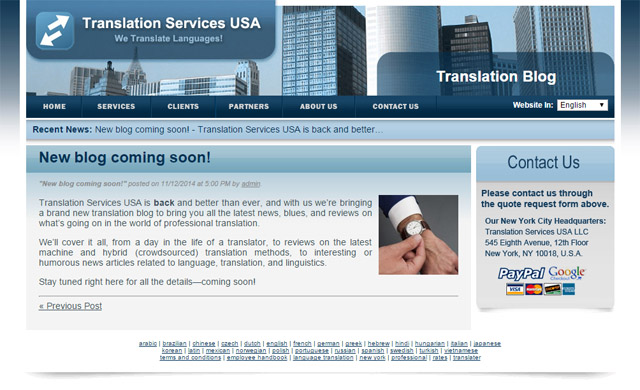3 Warning Signs You’ve Hired an Incompetent Translator
3 Warning Signs You’ve Hired an Incompetent Translator
Working with translators can be challenging—in most situations, when you look for a freelancer to handle some work-for-hire task on your behalf, you can look through their portfolio, see if they are a good fit for your needs, and make a decision based on prior experience and personal taste. Translation is different though—since you are hiring a translator to translate text into a language you do not understand, there is no easy way to tell if what they have returned to you is accurate and of a high quality. You have to either find a second translator who is able to review their work, and then trust and pay them as well, or you will simply have to work on instinct.
Like all professions, there are honest, hard-working translators, and there are people who call themselves professional translators, but are really out to game the system and make a quick buck. Translation is a real profession which requires not only experience, but study and knowledge of linguistic principles in both languages. Not just any bilingual person can become a translator. So how can you tell the difference without knowing the language yourself?
Here are a few tips and some tell-tale ways of determining whether or not you have hired a competent translator…
1. Check with Google Translate
Sometimes, a less-than-honest translator will pull a bait-and-switch move—they will prove to you that they can write and speak in both languages, and then when your project comes they simply copy and paste it into Google Translate and call it a day.
As we have discussed before, Bing, Google, and other machine translation services are not perfect, and produce some results that range from inaccurate to laughably bad. You do not want your important text run through one of these translators, but especially not if you have paid a real professional to translate it.
So make sure your translation is not just directly from Google Translate; paste some of your original text in and compare how closely your translation matches Google’s. It is possible that some of the translations have been proofread by real humans within Google’s network, so make sure you check multiple samples from throughout your text, and try to find some more challenging sentences.
2. Look for style changes
Another tell-tale sign that someone may be bilingual but not a legitimate translator is if they change the style of the text you have written. Professional translators know that you want an exact representation of your text in another language, and so if there are grammatical errors, unusual formatting or punctuation, and other stylistic choices in the source text, they will want to replicate that in the translation as well, so as not to change the tone or voice of the original.
Here are some key examples you can be on the lookout for:
(the language we used is “Pig Latin”)
- Additional spacing:
Original: We put words in key:value pairs.
Translation: Eway utpay ordsway inay eykay: aluevay pairs.
This may be a difficult one to detect, but note that the translator has added a space after the colon in the translation. - Modified punctuation:
Original: Hello out there………
Translation: Ellohay outay erethay…
The translator has shortened the number of periods in the ellipsis significantly. - Modified capitalization:
Original: i said, “hello, john.”
Translation: “Iay aidsay, “ellohay, John.”
The translator has capitalized the first letter in the sentence as well as the person’s name. This may be more “correct” grammatically, but the original sentence may be from a casual online chat or other source—the translation should match the style of the original, even if the original is not correct.
Be aware though that there are some exceptions to this! Some languages, like French for example, place additional spaces around printed punctuation, which may seem like an error to an English reader but are actually completely valid. So use caution before jumping to any conclusions!
3. Get it proofread
The last, and most accurate way, to tell if your translator has done a competent job or not is to hire a second professional translator to proofread your text.
Yes, it will come at an additional expense, but the cost is minimal compared to that of the original translation, and can potentially save you hundreds of dollars or more if it turns out the translation was not correct and requires revisions anyway.
Additionally, a professional translator may be able to tell at a quick glance whether or not a translation was done by machine, or was simply done poorly, even without going through and doing a full proofreading and corrections.
Do you have any more tips for checking a translation’s quality as a non-speaker of the target language? Let us know!




